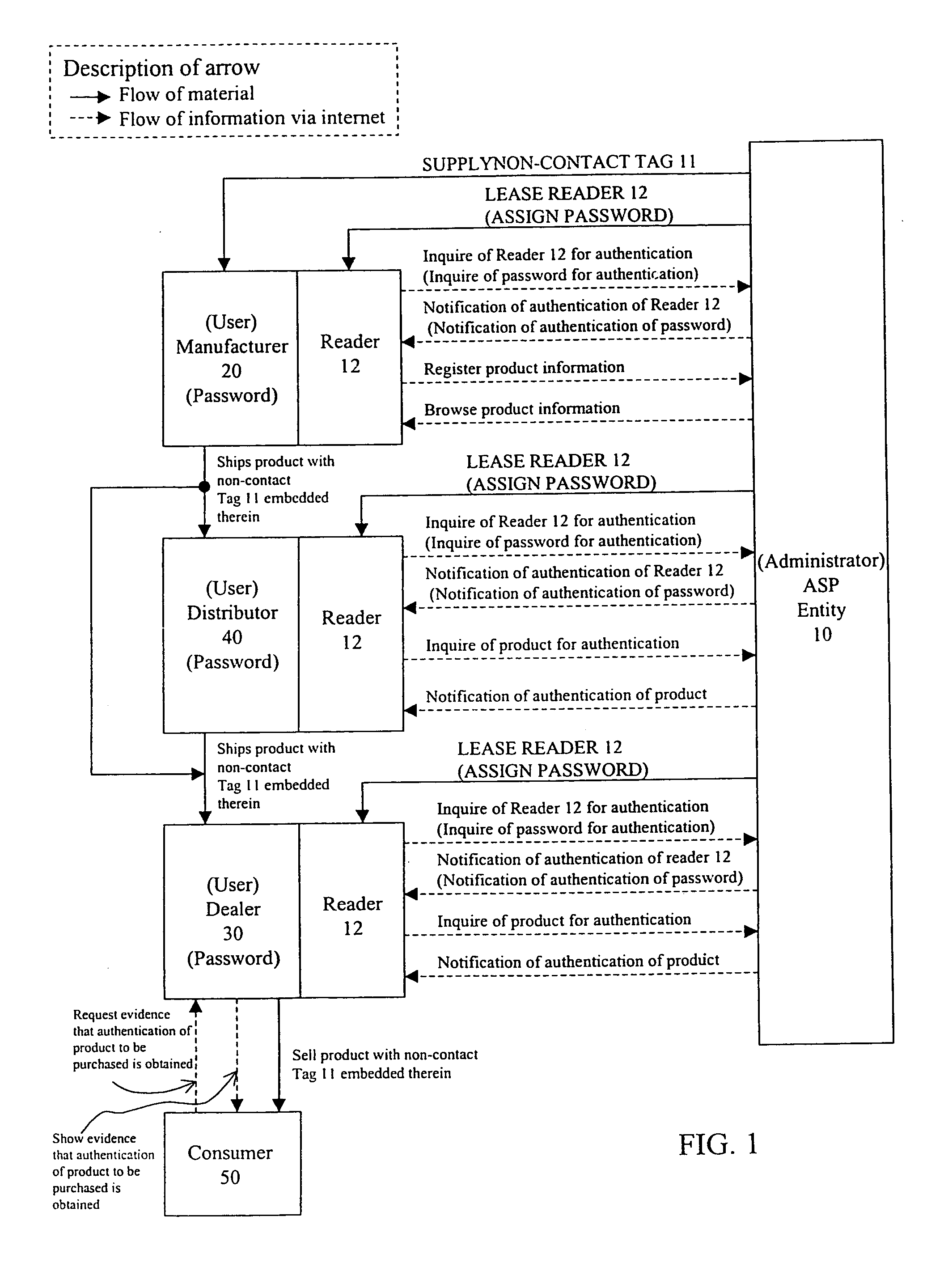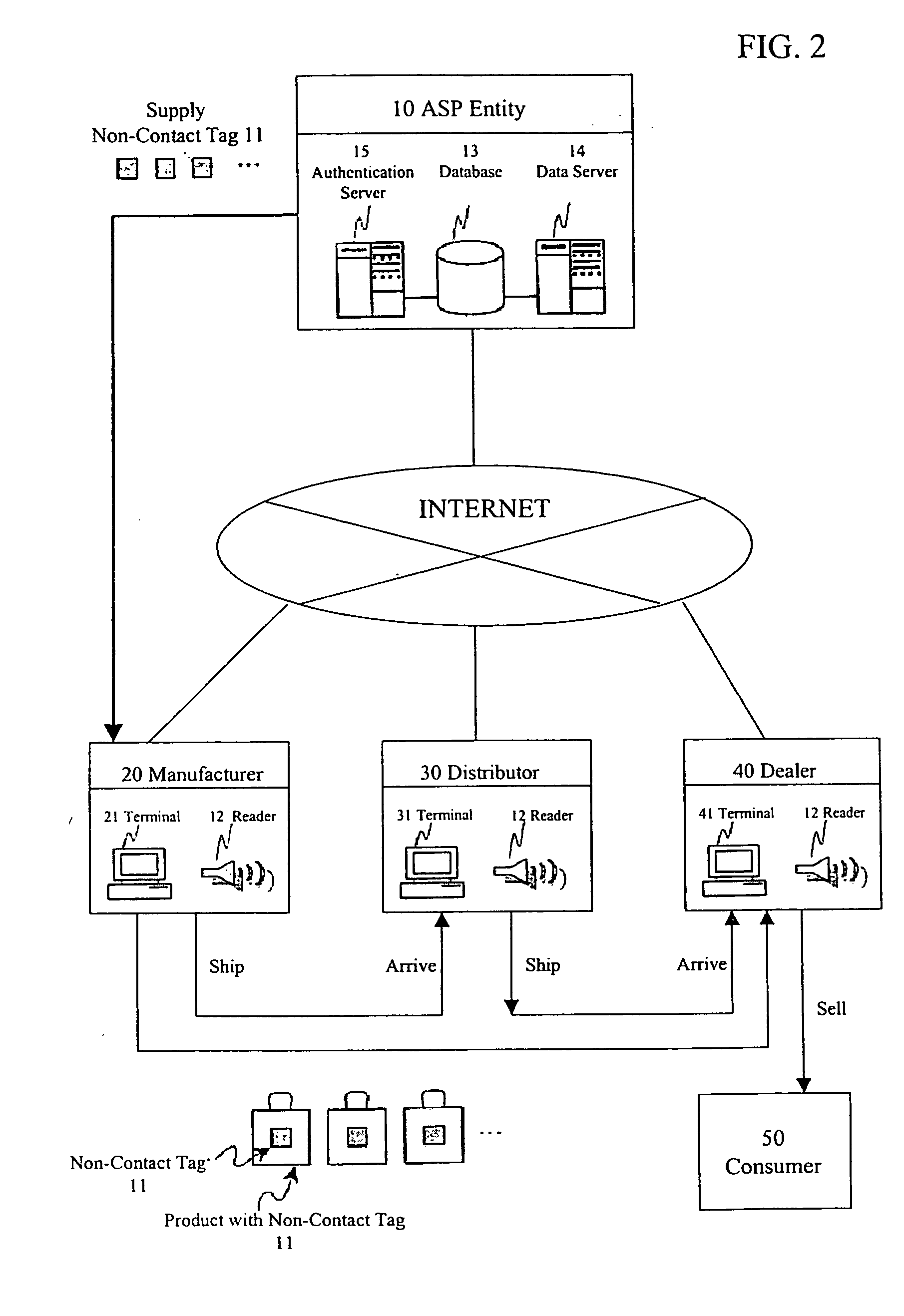Product authentication system for preventing distribution of counterfeits in market
- Summary
- Abstract
- Description
- Claims
- Application Information
AI Technical Summary
Benefits of technology
Problems solved by technology
Method used
Image
Examples
Embodiment Construction
[0050] Next, with reference to the drawings, an embodiment of the present invention is described specifically and in detail.
[0051] First, an overview of an embodiment of a product authentication system according to the present invention is described with reference to FIG. 1.
[0052] Parties concerned in a product authentication system are an ASP entity 10 who is an administrator, and, a manufacturer 20, a dealer 30, a distributor 40, and a consumer 50 who are users. The ASP entity 10 administers a non-contact tag 11 and a reader 12 to administer and operate the product authentication system and provides product authentication service.
[0053] The ASP entity 10 supplies the manufacturer 20 with the non-contact tag 11. The non-contact tag 11 has a specific ID, and the ID is stored in a body of the non-contact tag as electronic data. The ASP entity 10 administers ID data of the non-contact tag 11, and data of attribute information such as the name of the manufacturer who is an supplier....
PUM
 Login to View More
Login to View More Abstract
Description
Claims
Application Information
 Login to View More
Login to View More - R&D
- Intellectual Property
- Life Sciences
- Materials
- Tech Scout
- Unparalleled Data Quality
- Higher Quality Content
- 60% Fewer Hallucinations
Browse by: Latest US Patents, China's latest patents, Technical Efficacy Thesaurus, Application Domain, Technology Topic, Popular Technical Reports.
© 2025 PatSnap. All rights reserved.Legal|Privacy policy|Modern Slavery Act Transparency Statement|Sitemap|About US| Contact US: help@patsnap.com



